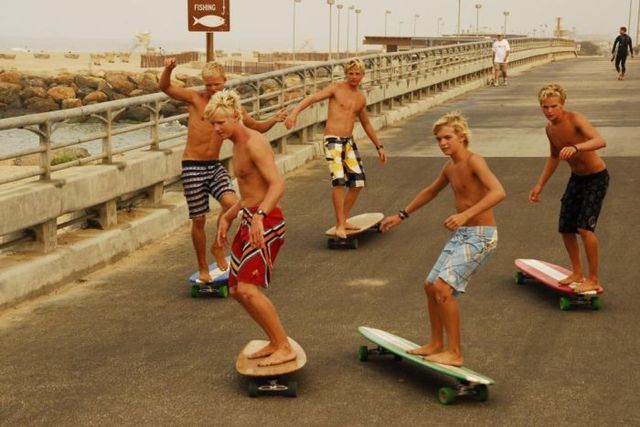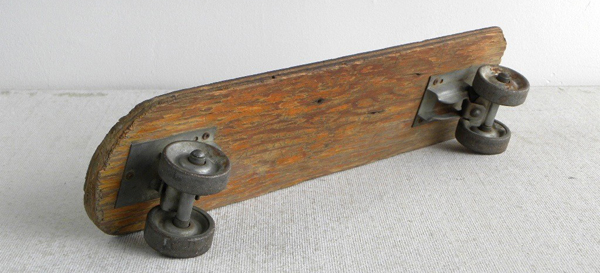
Skateboarding has its roots in surfing. Sometime in the 1950s when the waves were flat, surfers began attaching roller skate wheels to wood planks so that they could go “street surfing”.
Early skateboards were crude, with wheels made of metal and then clay. As board designs advanced, incorporating urethane wheels and improved trucks, increasingly difficult tricks became possible.

Then skateboarding began to give back to surfing.
In the late 70s, after skateboarders were regularly launching into the air above swimming pools, surfers attempted their first aerials. Pro surfer Christian Fletcher grew up skateboarding and was an early pioneer.
Others, including now 11-time world champion Kelly Slater, quickly followed suit, bringing airborne skate moves to the water. And in 2011, Zoltan Torkos was awarded $10,000 by Volcom for completing the first kickflip in surfing history.
Such advanced tricks aren’t the only things skateboarding has to offer surfing.
While professional surfers like Josh Kerr and John-John Florence use skateboards to hone the difficult contest manoeuvres, surf instructor Barry Green believes skating can also help the typical wave rider.
Green, who runs Making the Drop surf school in Santa Cruz, California, points out that skateboarding mimics the board-body technique and timing of surfing.
He says “the average novice surfer has much to gain from simple flat-ground carving turns, and smooth rail-to-rail transitions, rocking from toe edge to heel edge” on a skateboard.